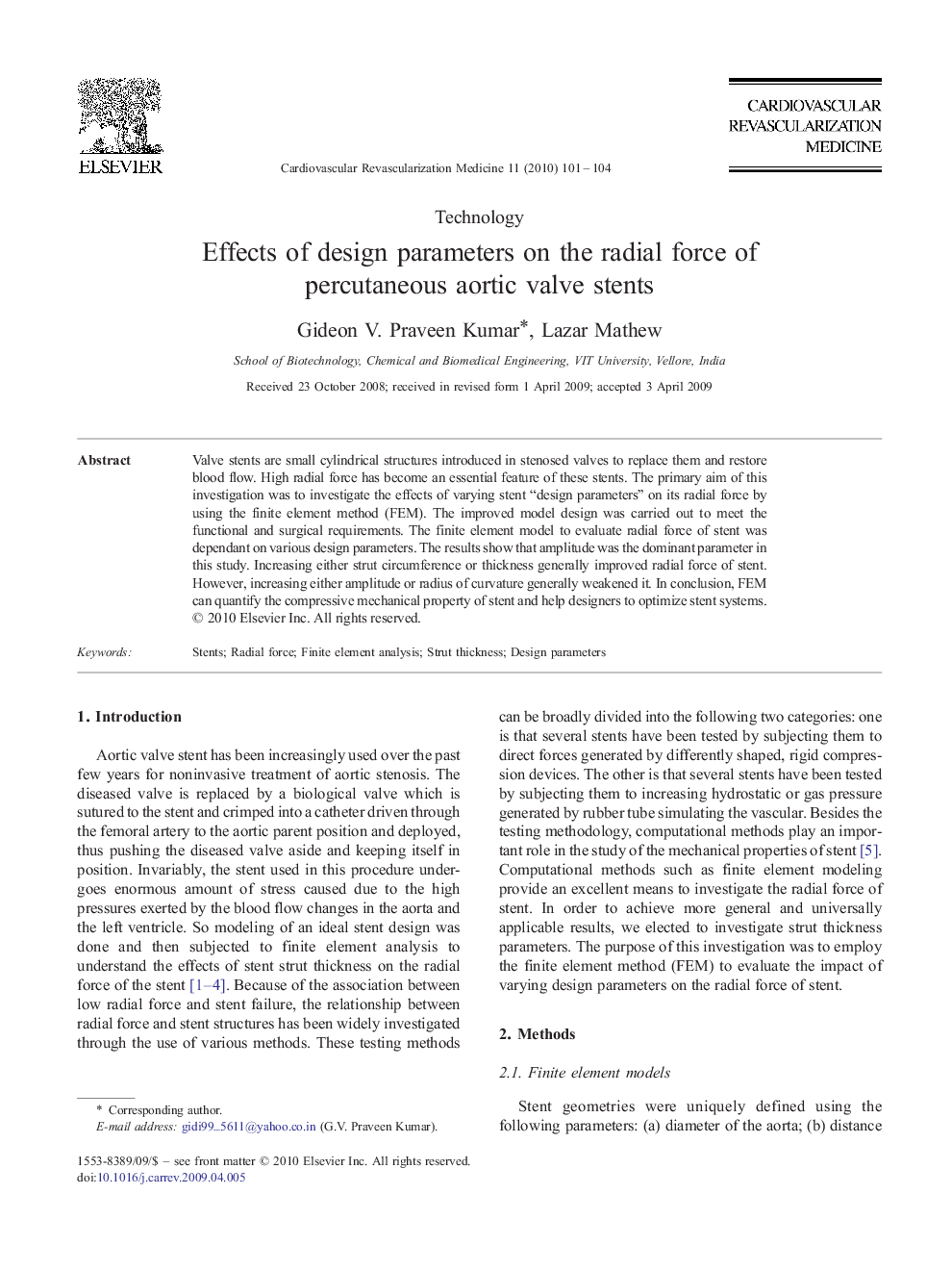| Article ID | Journal | Published Year | Pages | File Type |
|---|---|---|---|---|
| 2837428 | Cardiovascular Revascularization Medicine | 2010 | 4 Pages |
Valve stents are small cylindrical structures introduced in stenosed valves to replace them and restore blood flow. High radial force has become an essential feature of these stents. The primary aim of this investigation was to investigate the effects of varying stent “design parameters” on its radial force by using the finite element method (FEM). The improved model design was carried out to meet the functional and surgical requirements. The finite element model to evaluate radial force of stent was dependant on various design parameters. The results show that amplitude was the dominant parameter in this study. Increasing either strut circumference or thickness generally improved radial force of stent. However, increasing either amplitude or radius of curvature generally weakened it. In conclusion, FEM can quantify the compressive mechanical property of stent and help designers to optimize stent systems.
